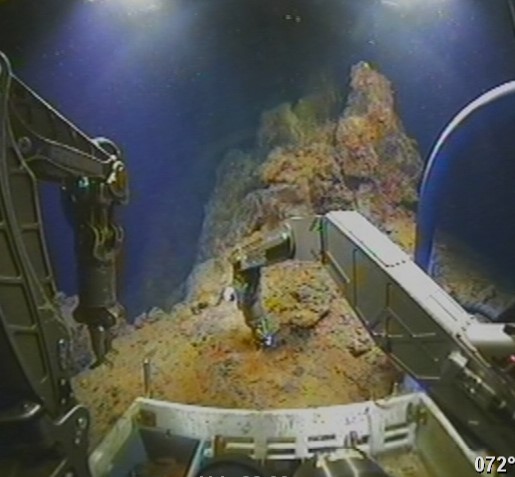Norway Discovers Seabed Mineral Deposits in Norwegian Sea
The Norwegian Petroleum Directorate (NPD) has just completed a successful data acquisition expedition on the Mohns Ridge in the north-western Norwegian Sea. During the four-week expedition, the NPD made several discoveries of previously unknown sulfide deposits.
3,900 line kilometers of geophysical seabed data was acquired using three AUVs operating simultaneously, collecting data as they passed about 50 meters above the seabed at a speed of three knots. The AUVs operated independently for two days at the time away from the mother vessel, Seabed Constructor. The data acquisition has provided seabed maps with a resolution of one meter in water depths up to 3,000 meters.
Simultaneous to the AUV operations rocks samples were collected using ROVs. Five successful ROV dives were carried out, where large volumes of still-image photographs and HD video were shot to document the mineral deposits.
The Mohns Ridge is an oceanic spreading ridge that separates two tectonic plates, and the sulfide minerals are precipitated on the seabed. This takes place after seawater penetrates down into the seabed over underlying magma chambers. There the seawater is heated to more than 300 degrees Celsius and leaches out metals that are then transported up in hot springs on the seabed, where they are precipitated. Such springs build chimney-like mineral structures. These collapse at regular intervals, creating gravel piles - which the NDP sampled.
These deposits sampled include metals and minerals that are important in battery technology, wind turbines and mobile telephones. Previous chemical analysis of sulfides and manganese crusts from the Norwegian shelf have indicated that sulfides in the region contain a high content of copper (up to 14 percent in some samples), zinc (three percent) and cobalt (less than one percent).

The NPD has been assigned the task of mapping and proving deep sea mineral deposits by the Ministry of Petroleum and Energy. Exploration director at the NPD, Torgeir Stordal, said: “This is a ground-breaking cruise, in that it is the first time so many autonomous vehicles have been used simultaneously for systematic large-scale mineral mapping. This makes it possible to cover large areas in a short amount of time, so we can streamline and accelerate deep sea data acquisition.”
The data acquisition cruise was carried out by Ocean Infinity using the Seabed Constructor, with experts from Ocean Floor Geophysics and the Norwegian Petroleum Directorate. PhD candidates from the University of Bergen (UiB) and NTNU were also invited on the cruise.
